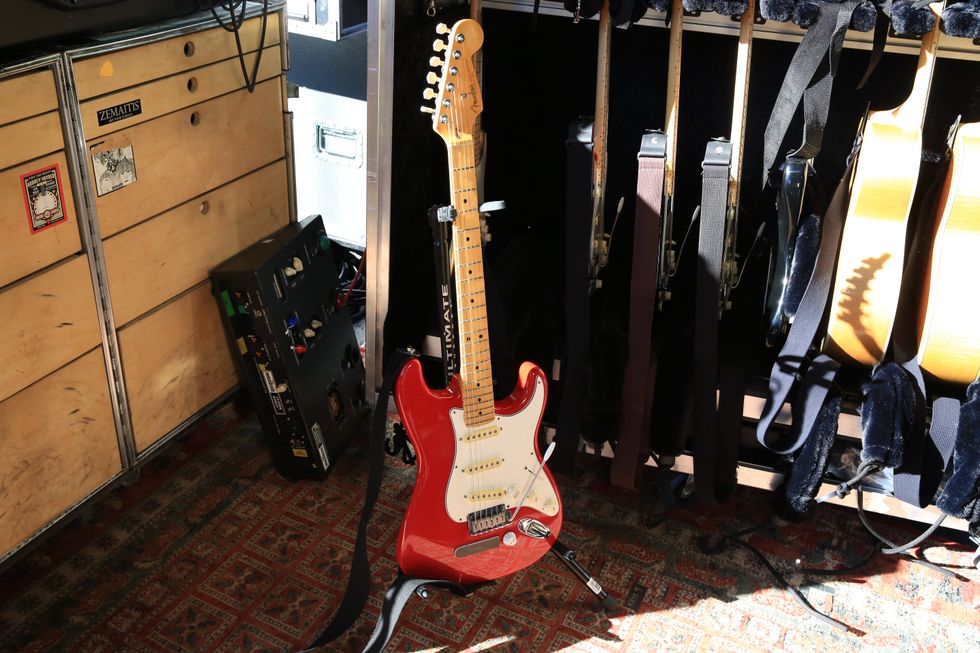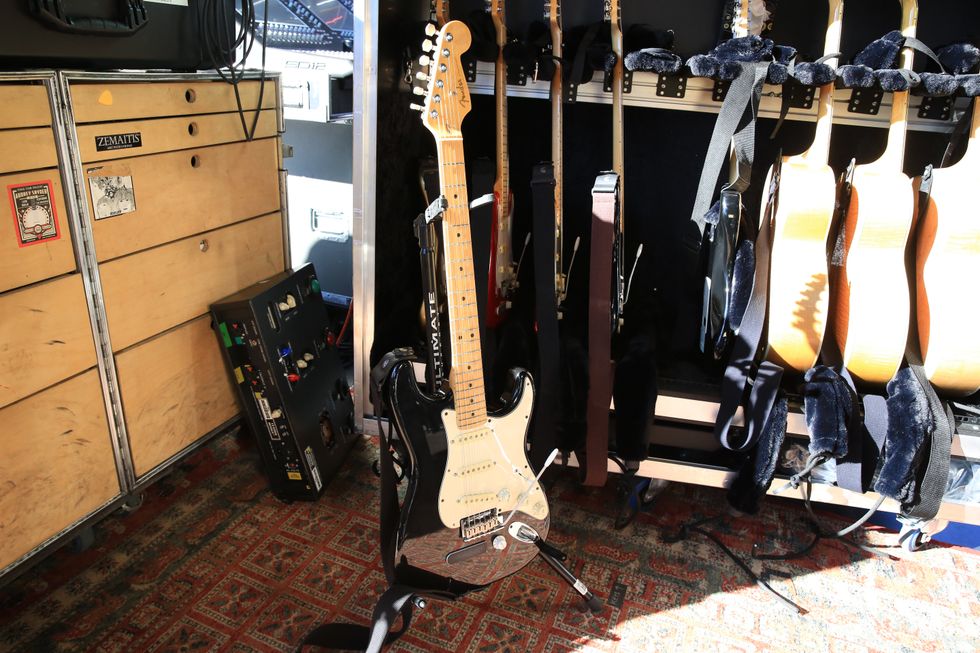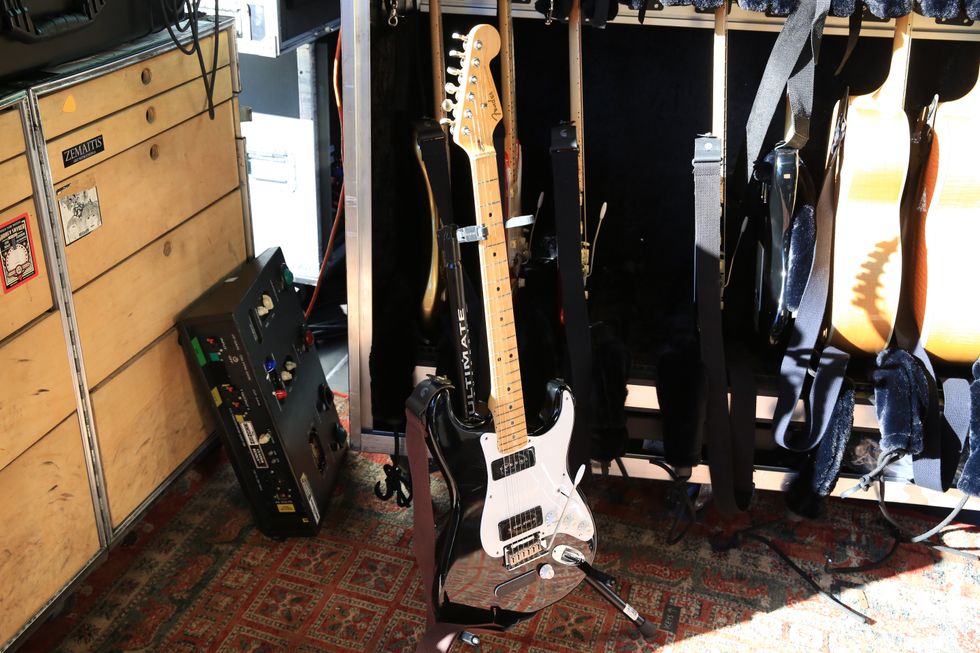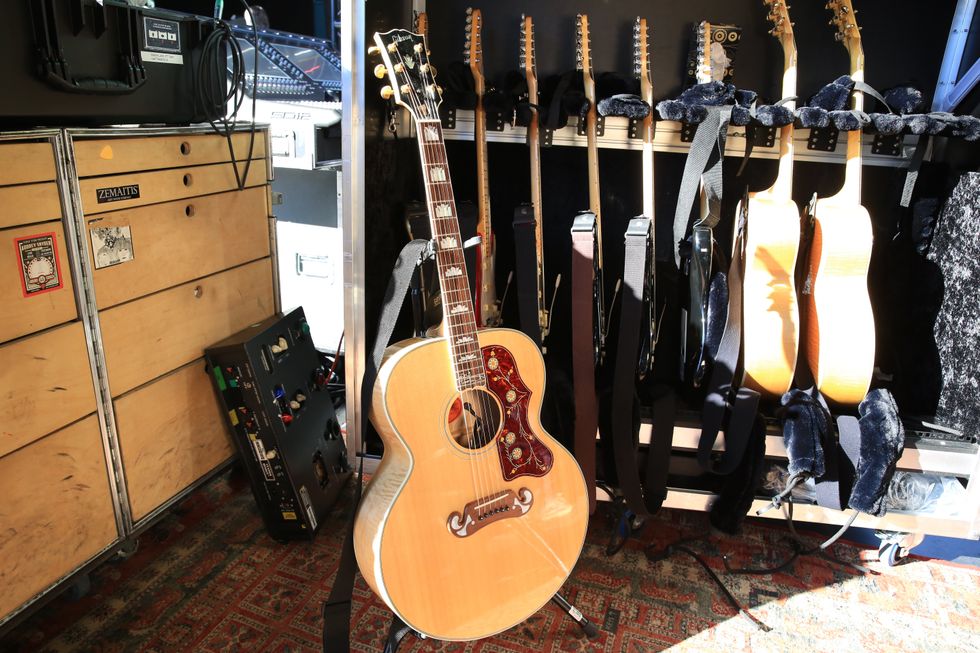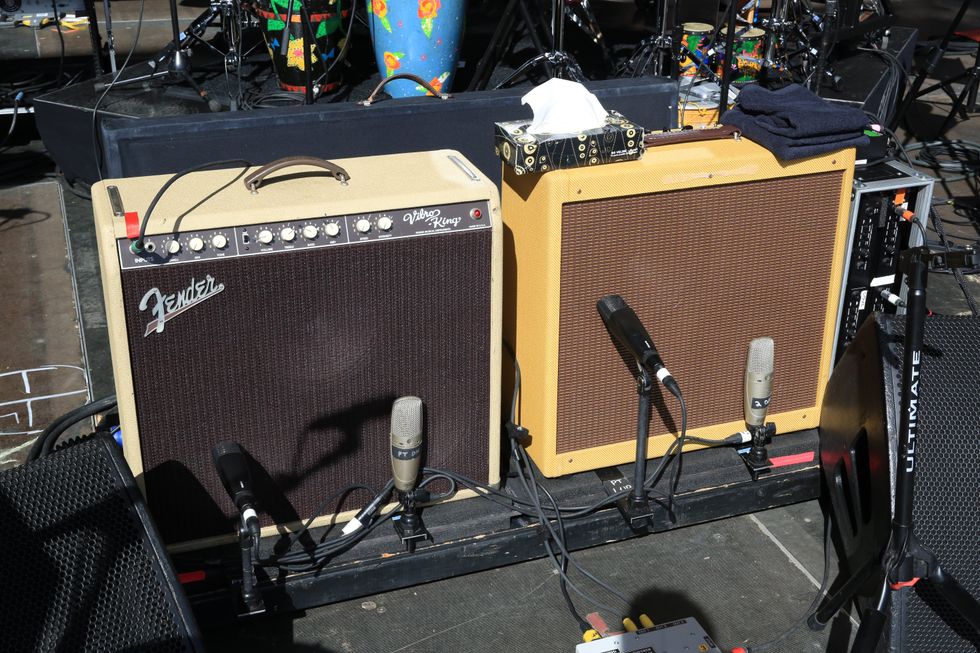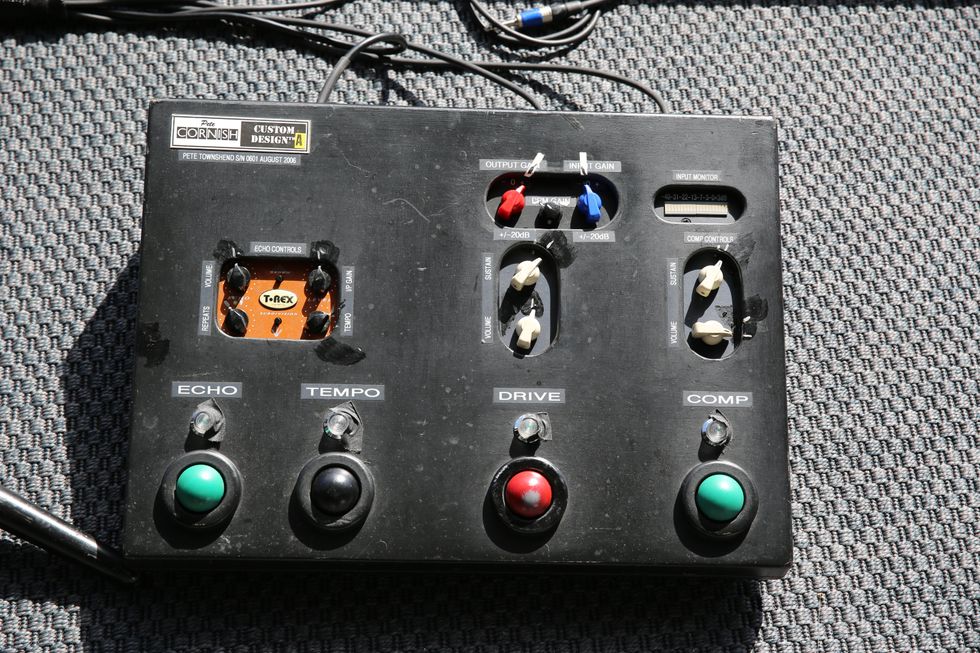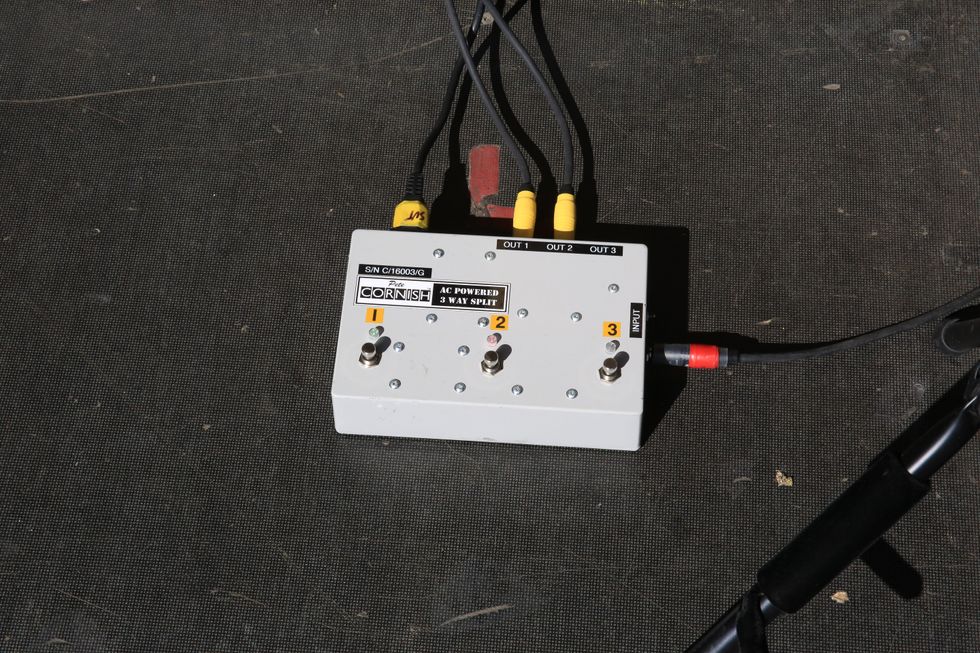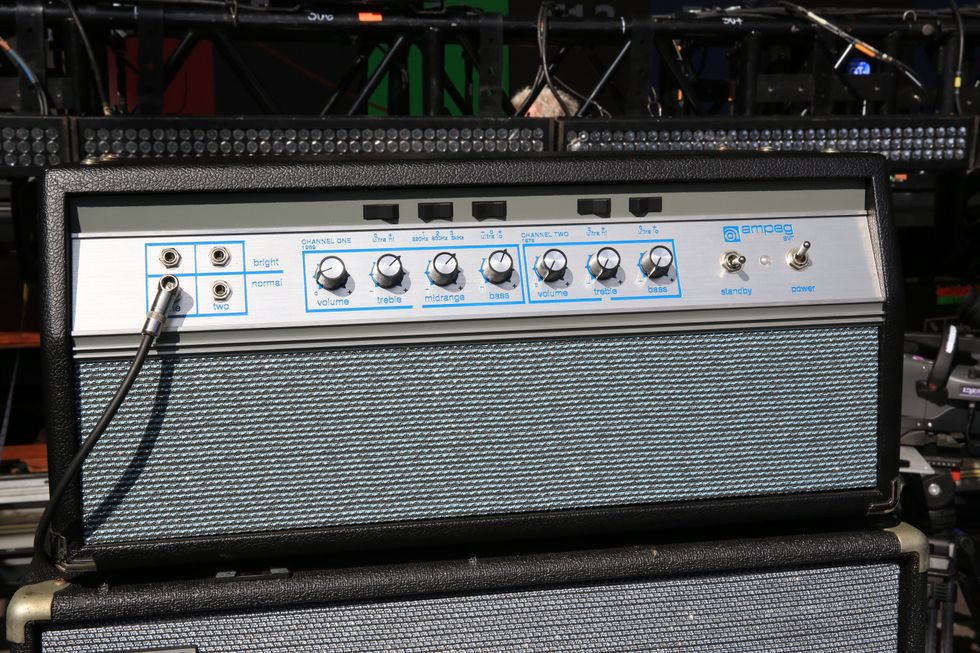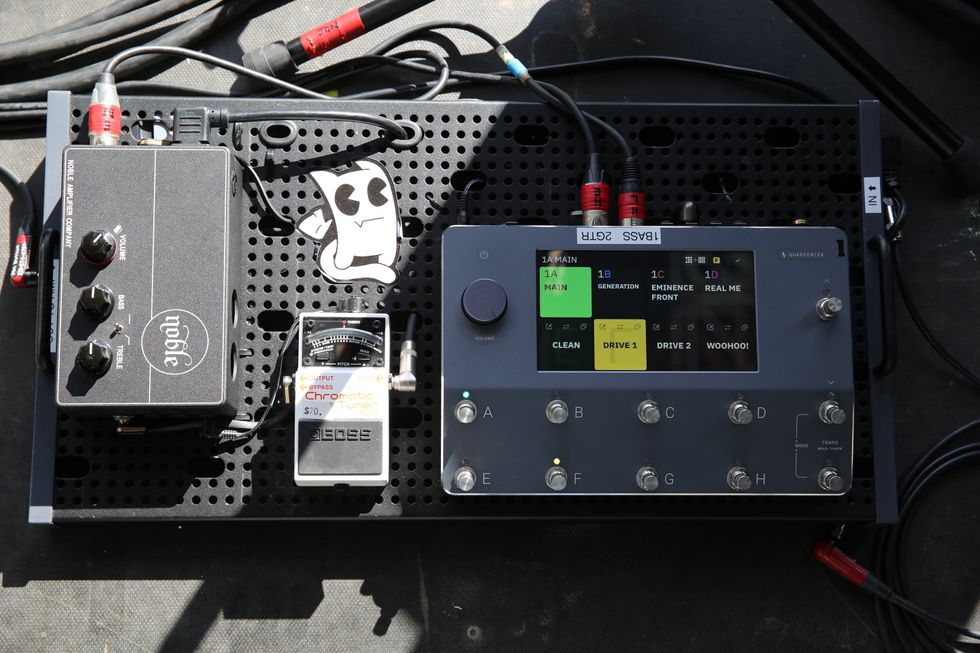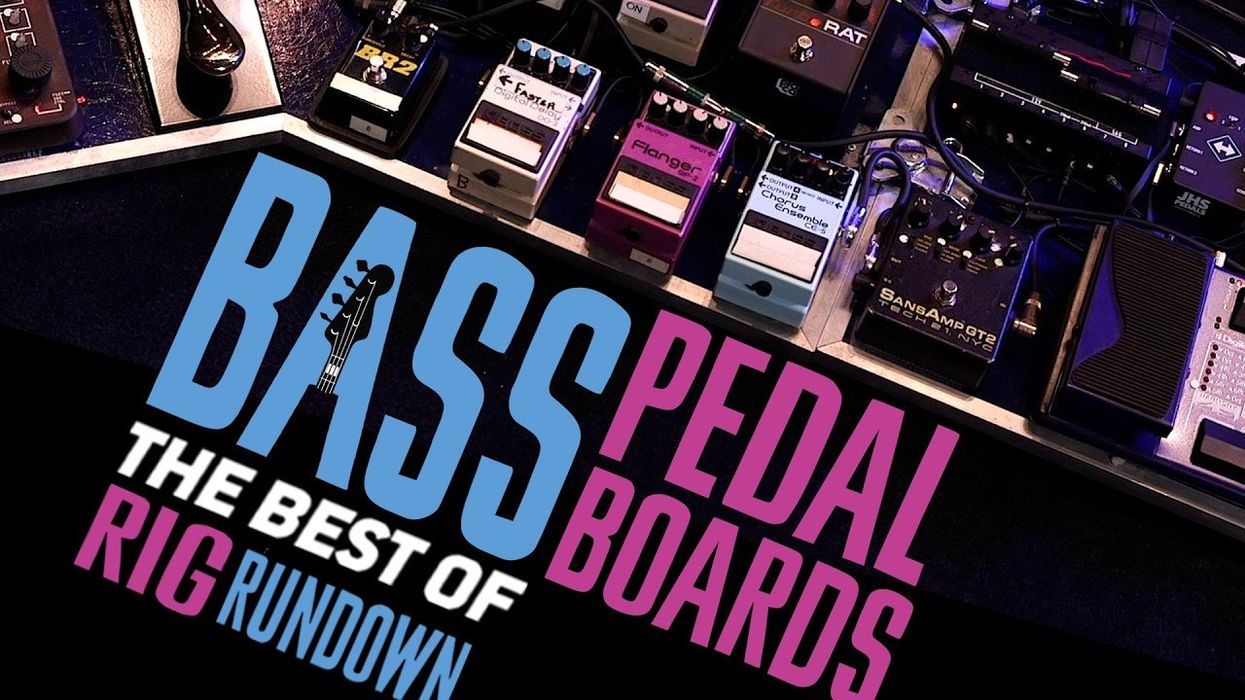The bass lord morphs and mutates between rhythm and lead parts with a hearty Wal 4-string, Gallien-Krueger crushers, and a pedalboard that could make Adam Jones jealous.
“Will the next Tool album take more than 10,000 days?”
That was an ongoing (and agonizing) joke for Tool fans that awaited the band’s fifth album following the release of 2006’s 10,000 Days. (A cruel clairvoyance of a title.) For those counting, when Fear Inoculum was finally delivered on August 30, 2019, it was just 4,868 days from their previous album. All crummy jokes aside, the anticipation of the album was real for a reason: the music. And the rhythmic cog of their constant contorting of depth and darkness is bassist Justin Chancellor.
Sure, drummer Danny Carey is a living legend bashing everything his large frame can smash and crash. Adam Jones transforms his guitar into a Hans Zimmer production with varied textures, temperaments, and traits his tone expresses. During shows, singer and lyricist Maynard James Keenan prowls in the shadows adding to the band’s musical mysticism. This triumvirate core dished out the punishing EP Opiate in 1992, and their 1993 debut full-length Undertow was more complex and calculated in its rage. But in 1995, when Justin Chancellor replaced Paul D’Amour on bass, Tool immediately expanded their dimensionality. The original three continued to dazzle and dumbfound listeners, but the addition of Chancellor and his pocket-minded role unlocked a collective vocabulary previously unspoken. Simply put, if Tool was an octopus, Chancellor was the head. The others could be momentarily independent tentacles exploring the melodic murkiness of their respective reaches, but when they needed to propel forward, Chancellor was steering. His lines are the base for the band’s groove and attitude that became a focal point on subsequent releases with 1996’s Ænima, 2001’s Lateralus, 2006’s 10,000 Days, and eventually 2019’s Fear Inoculum. The former three went triple-platinum, while the latter three were No. 1 on the Billboard 200. (Ænima landed in the No. 2 spot.)
If you ever catch yourself playing air guitar to Tool, you’re probably mimicking Chancellor’s parts. “Schism,” “The Pot,” “Forty Six & 2,” “H.,” “Fear Inoculum,” “Descending,” “The Grudge,” and plenty of others feature his buoyant bass riffs.
Chancellor’s tone has had a longstanding relationship with Wal basses, Gallien-Krueger amps, and Mesa/Boogie cabs. The evolving part of his rig has been his pedalboard. At this juncture of the band’s run supporting Fear Inoculum, Chancellor’s board is larger than his guitar-playing counterparts. Yet everything has a place and purpose. Some of it is duplicity, some of it is to avoid any required knob-turning during the show, and as we find out in the Rundown, some of it is just for fun. Grab a seat and get comfortable as Chancellor and his tech Pete Lewis walk PG’s elated Chris Kies through his live setup.
Brought to you by D’Addario: https://ddar.io/wykyk-rr
and D’Addario XPND Pedalboard: https://www.daddario.com/XPNDRR
Like a Glove
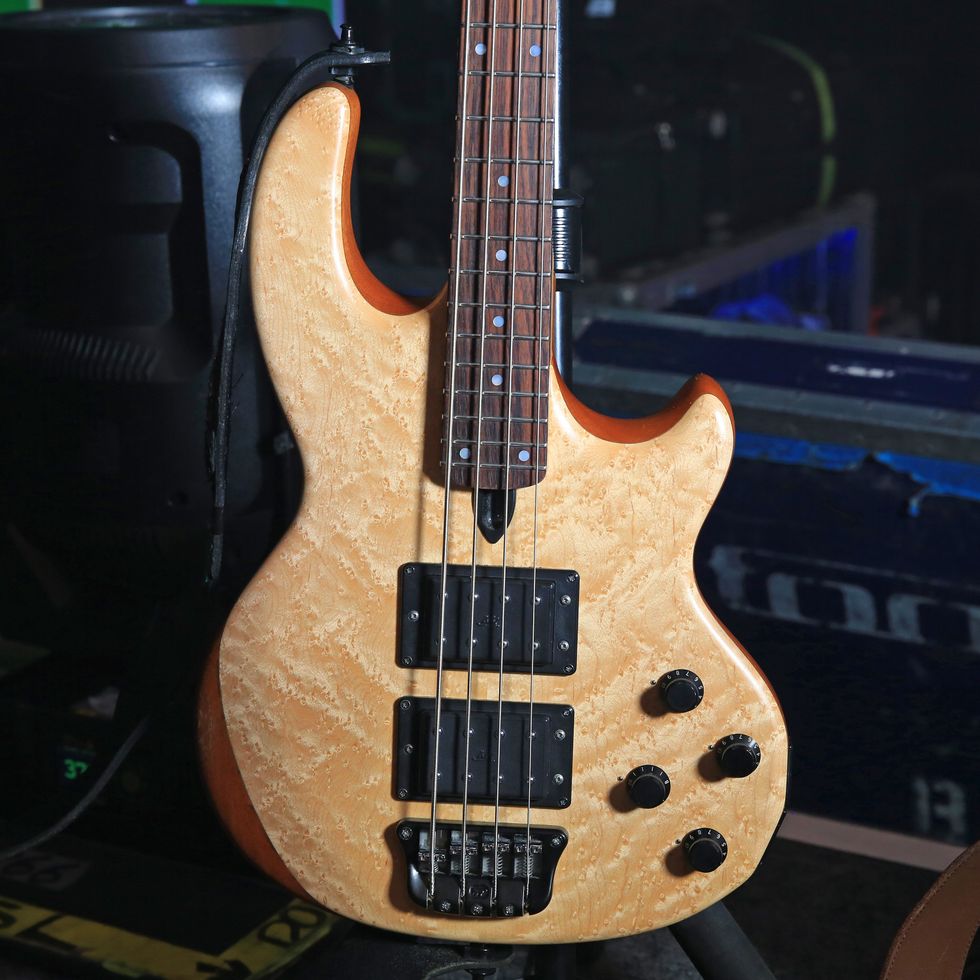
While recording Ænima, Chancelor borrowed a friend’s Wal bass that was originally fretless, but his pal did the dirty work of embedding frets into it. “That original bass’ tone immediately fit in with the band and covered the right area of sound,” remembers Chancellor. He promptly ordered his own replica of that build, and this is the second edition of it. The above 4-string has been his main bass for the last 15 years. It has a mahogany core, bird’s-eye maple caps, a neck incorporating mahogany, maple and rosewood, and a rosewood fretboard. Some minor changes to improve comfort and playability include lighter hardware and Luminlay fret markers. Chancellor’s basses take a custom set of Ernie Ball Hybrid Slinky Bass strings that have the standard .045-.065-.85, but because they tune down to drop-D for most songs, he swaps in a .110 from the Power Slinky pack. And when they go to drop-C for their oldest material, he’ll put on a .135 string. He hammers on the strings with a custom Dunlop (1 mm) Tortex Tri pick. All his instrument cables come from Mogami.
Full-Circle StingRay

Chancellor recalls auditioning for Tool with an Ernie Ball StingRay, but it just didn’t work with the band’s sound at the time. Fast forward two decades and the StingRay has found a cozy place in the Tool setlist. The 2018 Music Man StingRay Special is used on “Descending” from Fear Inoculum. Anyone keen on details will notice the high-tech solution of duct tape and marker that allows Justin to incrementally notch up the volume during the song’s blossoming midsection.
Pretty Practice P
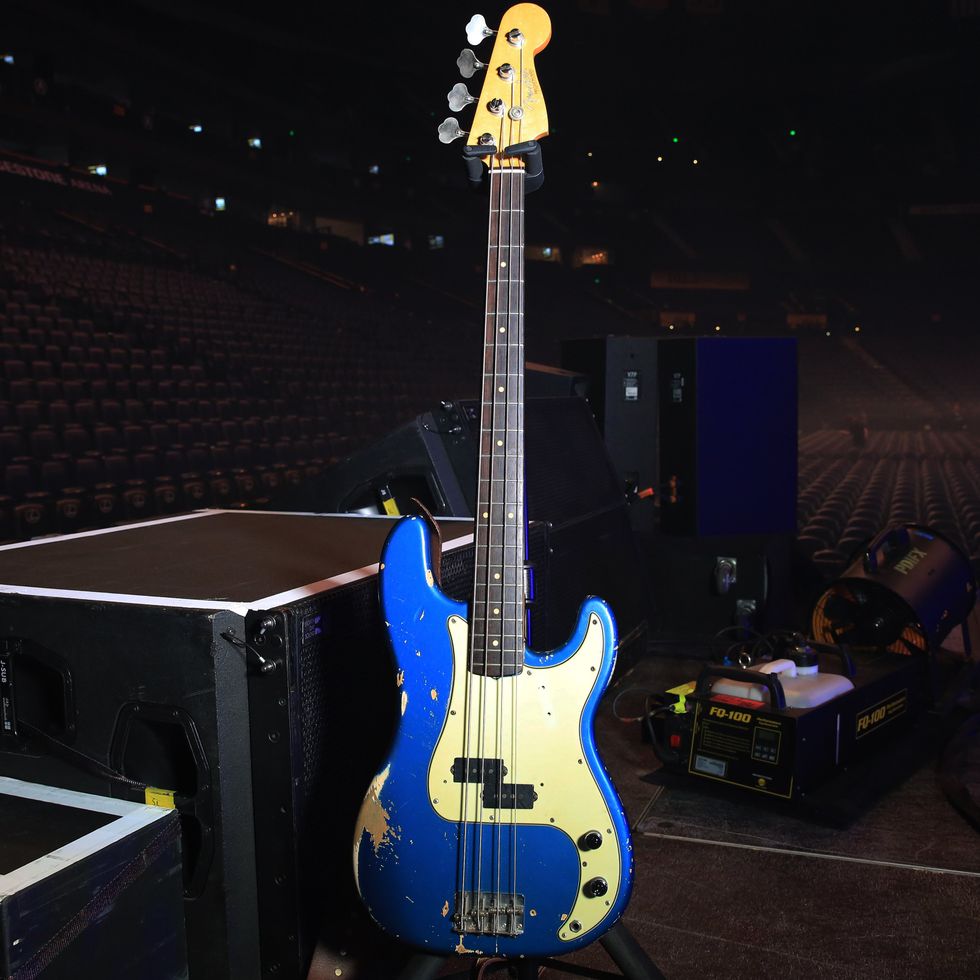
Justin scooped this beautiful 1963 Fender P bass from Norm’s Rare Guitars. He does have a small collection of old instruments, but they have to meet two requirements before he makes the buy: They have to sound amazing and they have to be players so he can “bang away on them” without remorse. He doesn’t play it onstage (the vintage P’s output doesn’t have enough horsepower for Tool), but he does bring it on tour because he finds it inspirational to play, so it’s often with him backstage, on the bus, or in the hotel room.
Welcome to the Thunderdome!
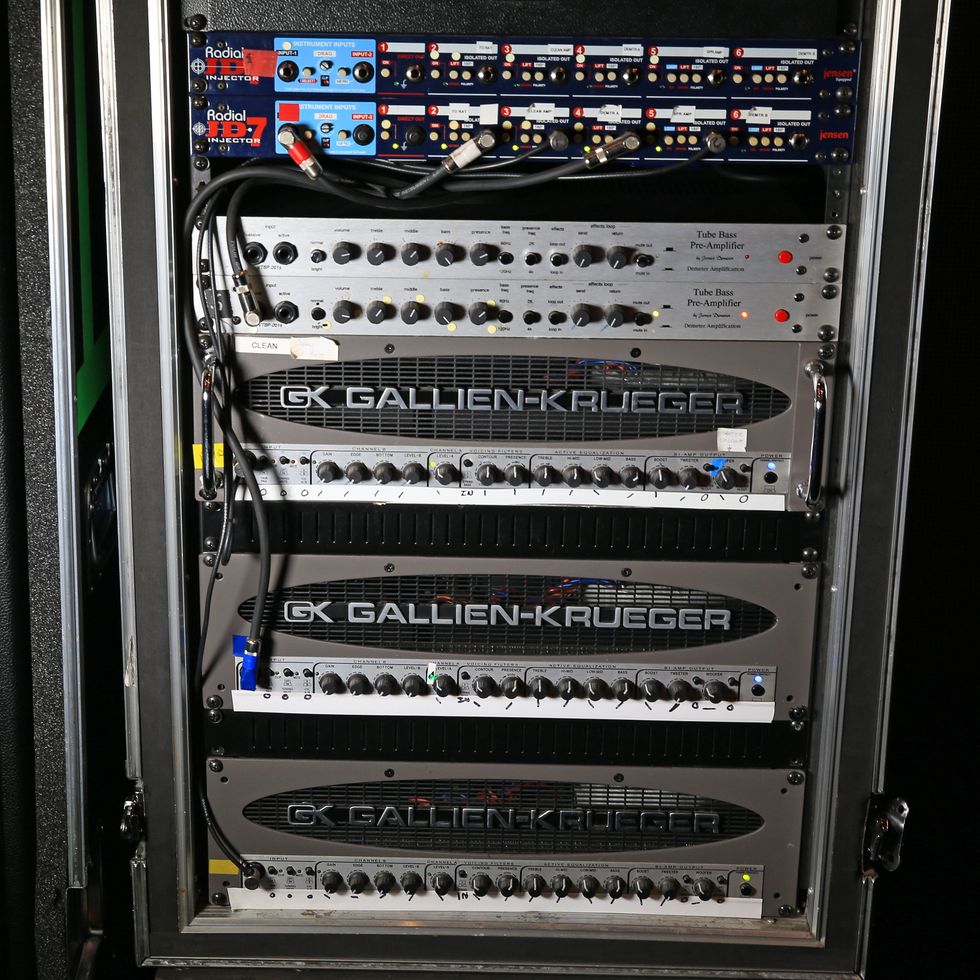
This configuration of Demeter preamps and Gallien-Krueger power amps has been the nucleus of power for Justin’s studio and stage sound for years. The Gallien-Krueger 2001RB heads each hit their own cabinet. The “clean” RB runs into a Mesa/Boogie RoadReady 8x10. The middle RB head in the rack is the “dirty” amp that goes into a prototype Mesa/Boogie 4x12 that is EQ’d gnarlier and takes all of Chancellor’s pedals. He feels the 10" speakers retain the integral low-end bass tone better than the 12s, while the larger speakers are better suited for offering his distorted or effected tones an overall warmth that can disappear in the 10s. (The bottom 2001RB is on deck in case either head fails.)
Above the G-Ks are the Demeter Bass Tube Preamplifiers that give FOH a pure sound to mix in as needed. (The second Demeter unit is a backup.)
And up to the Radial JD7 Injectors are amp switchers that also help remove noise, signal loss, or hum and buzz.
Mesa Mountains
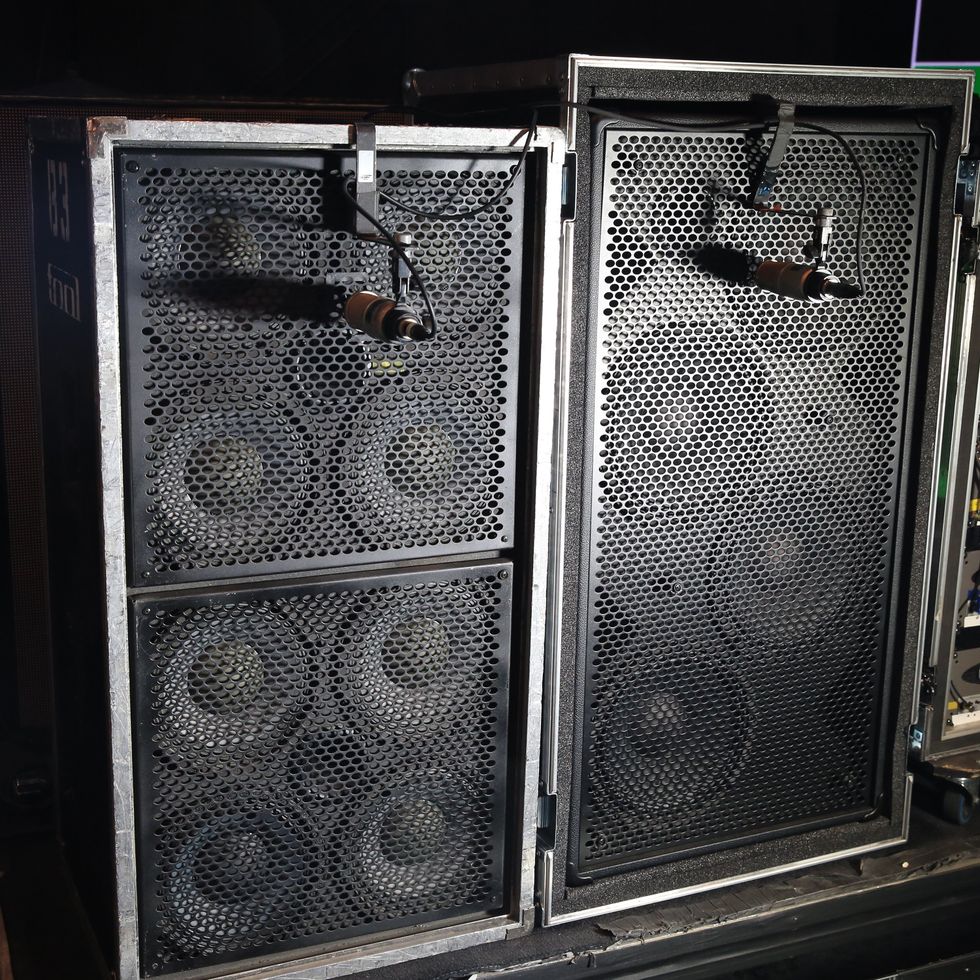
Here are the two Mesa/Boogie cabs—the 8x10 on the left and the custom prototype 4x12 on the right.
Justin Chancellor's Pedalboard
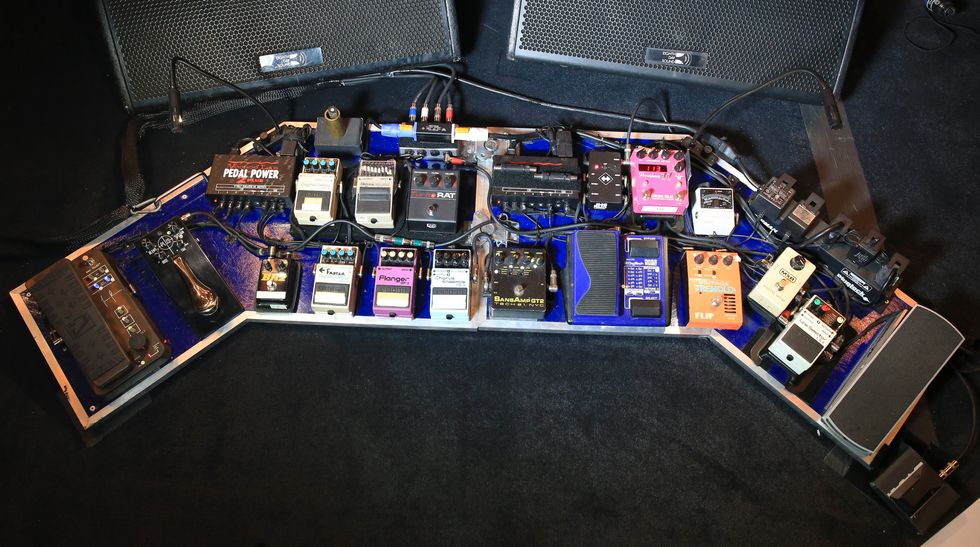
This setup is either a bass player’s dream or nightmare, but for someone as adventurous as Chancellor, this is where the party starts. At a glance, you’ll notice many of his pedals are available at your favorite guitar store, including six Boss boxes, an Ernie Ball Volume Pedal, and MXR Micro Amp. Crucial foot-operated pedals are in blue with the Dunlop JCT95 Justin Chancellor Cry Baby Wah with a Tone Bender-style fuzz circuit (far left) and DigiTech Bass Whammy (middle). He really likes using the Tech 21 SansAmp GT2 for distortion and feedback when the Whammy is engaged or he’s playing up the neck. Covering delays are three pedals—he has the pink Providence DLY-4 Chrono Delay for “Pneuma” that is programmed to match Danny’s BPMs, which slightly increase during the song from 113 ms to 115 ms. The Boss DD-3s are set for different speeds with the one labeled “Faster” handling “The Grudge” and the other one doing more steady repeats. There’s a pair of vintage Guyatone pedals—the Guyatone VT-X Vintage Tremolo Pedal (Flip Series) and Guyatone BR2 Bottom Wah Rocker (a gift from Adam Jones). The Gamechanger Audio Plus pedal is used to freeze moments and allow Justin to grab onto feedback or play over something. The Boss GEB-7 Bass Equalizer and Pro Co Turbo Rat help reinforce his resounding, beefy backbone of bass tone. The MXR Micro Amp helps goose his grimy rumbles. The Boss LS-2 Line Selector is a one-kick escape hatch out of the complicated signal chain for parts of “Schism.” The Wal and Music Man stay in check with the TU-3S tuner, a pair of Voodoo Lab Pedal Power 2 Pluses help bring things to life, and everything is wired up with EBS patch cables.
Shop Justin Chancellor's Rig

Music Man StingRay Special HH
Dunlop JCT95 Justin Chancellor Cry Baby Wah
Gamechanger Audio Plus Pedal
Boss DD-3 Digital Delay
Boss BF-2 Flanger
Boss CE-5 Chorus Ensemble
Boss GEB-7 Bass Equalizer
ProCo Turbo Rat
Tech 21 SansAmp GT2
DigiTech Bass Whammy
MXR Micro Amp
Boss LS-2 Line Selector
Ernie Ball VP Junior 250K
Boss TU-3S Tuner
JHS Switchback A/B Effects Loop Switcher
Voodoo Lab Pedal Power 2 Plus
Radial JD7 Injector



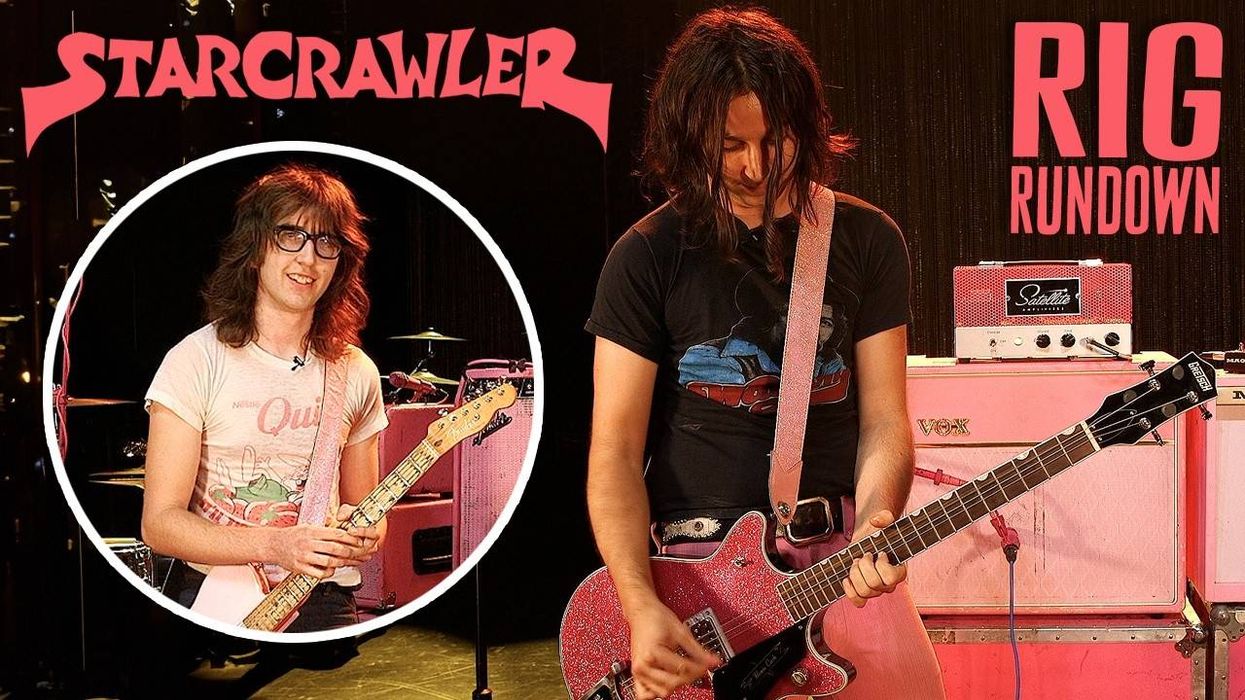
![Devon Eisenbarger [Katy Perry] Rig Rundown](https://www.premierguitar.com/media-library/youtube.jpg?id=61774583&width=1245&height=700&quality=70&coordinates=0%2C0%2C0%2C0)


































